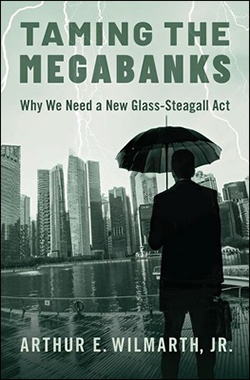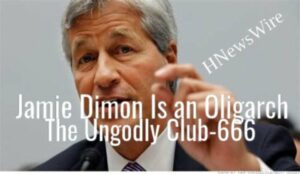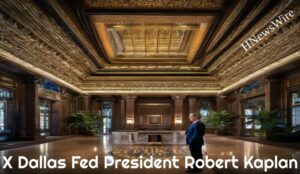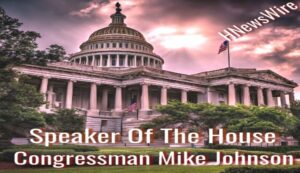
BanksterCrime:
By Pam Martens and Russ Martens,
George Washington University Law Professor, Arthur Wilmarth, has done it again. After authoring the seminal book on the insidious evolution and enormous dangers still posed by the Wall Street megabanks (Taming the Megabanks: Why We Need a New Glass-Steagall Act) Wilmarth is now out with a new, gripping paper. In the paper’s abstract, Wilmarth explains how the risks posed by the Wall Street megabanks in 2008 have become exponentially more dangerous today. He writes:
“The dangers created by universal banks (including their ‘internal’ shadow banking affiliates) and ‘external’ shadow banks have intensified since 2009. A toxic symbiosis has developed between the syndication and underwriting of risky loans and debt securities by universal banks and the origination of speculative private credit by ‘external’ shadow banks. That noxious partnership has helped to generate unprecedented levels of risky consumer and corporate debts.
“Universal banks and shadow banks have created dangerously unstable financial markets that depend on frequent bailouts from central banks and other government agencies. Four serious financial disruptions since the GFC [Global Financial Crisis] have triggered significant government interventions and bailouts—the repo crisis of 2019, the pandemic financial crisis of 2020–21, the failures of three U.S. regional banks in 2023, and the collapse of Credit Suisse. Those episodes demonstrate that universal banks and shadow banks pose massive and unacceptable threats to our financial system, economy, and society.”
Patrick Corrigan, Associate Professor of Law, Notre Dame University School of Law
Wilmarth’s paper expands on the groundbreaking work of Patrick Corrigan, Associate Professor of Law at the University of Notre Dame Law School, who last August did a deep dive into the shadow banks that exist off-balance sheet in the form of Variable Interest Entities (VIEs) at the largest Wall Street megabanks (a/k/a universal banks). Corrigan documents the key role these shadow banks/VIEs played in the financial crisis of 2007-2010.
Wilmarth explains the breakthroughs in Corrigan’s research as follows:
“…Professor Corrigan shows that universal banks used off-balance-sheet VIEs [Variable Interest Entities] to evade rules governing bank capital, bank affiliates, and investment companies. The Basel Capital Accords and implementing rules adopted by U.S. regulators ‘allowed banks to reduce their capital requirements either by moving their loans (through securitization) to off-balance sheet conduits or by obtaining financial guarantees from AAA- or AA-rated companies’— such as AIG, Ambac, and MBIA. The most extreme example of such arbitrage occurred when federal regulators allowed universal banks to reduce their risk-based capital requirements by 90% if they transferred RMBS [Residential Mortgage-Backed Securities] or CDOs [Collateralized Debt Obligations] to off-balance-sheet conduits that were backed by short-term guarantees (liquidity puts) from banks.
“Professor Corrigan makes a new and important contribution to the securitization literature by showing that the Federal Reserve Board (Fed) and the Securities and Exchange Commission (SEC) exempted off-balance-sheet securitization conduits from regulation either as affiliates of the sponsoring banks or as investment companies. An informal exemption granted by the Fed and a 1992 rule issued by the SEC allowed bank sponsored VIEs to escape a host of regulations governing bank affiliates and investment companies—including capital rules, restrictions on affiliate transactions and investments, prudential supervisory standards, and special receivership proceedings. By allowing securitization VIEs ‘to avoid virtually all of the rules that apply to bank affiliates and investment companies,’ the Fed and the SEC ‘exacerbated distress as the 2007–2009 financial crisis unfolded.’ ”
The poster child for off-balance sheet hubris before, during and after the 2008 financial crisis was the megabank, Citigroup. The official report from the Financial Crisis Inquiry Commission provides these shocking details:
“…More than other banks, Citigroup held assets off of its balance sheet, in part to hold down capital requirements. In 2007, even after bringing $80 billion worth of assets on balance sheet, substantial assets remained off. If those had been included, leverage in 2007 would have been 48:1, or about 53% higher….”
For our as-it-happened reporting on the collapse of Citigroup in 2008, see The Rise and Fall of Citigroup. By March of 2009, Citigroup was a 99-cent stock.
What is lurking in the form of off-balance sheet VIEs today at some of the megabanks on Wall Street is just as opaque and dangerous (if not more so) than it was in 2008.
JPMorgan Chase’s 10-K (Annual Report) filed with the Securities and Exchange Commission (page 202) shows it has $1.498 trillion in off-balance sheet exposures as of year-end 2023. This is the same bank whose Chairman and CEO, Jamie Dimon, is bullying his regulators to drop their demand that his bank hold 25 percent more capital.
Where Corrigan and Wilmarth part paths in their latest papers is how to reform these off-balance sheet risks to the U.S. financial system. Corrigan proposes rule changes while Wilmarth sticks to his book’s well-documented case that the only lasting and meaningful way to reform the Wall Street megabanks is to restore the Glass-Steagall Act via Congressional legislation and permanently separate federally-insured banks from the trading casinos on Wall Street.
Given the corrupt revolving door between Wall Street and its regulators, and Wall Street’s long-held attitude that “it’s legal if you can get away with it,” clearly Wilmarth has the only workable reform idea.


Give the gift of great skin care. Our Soap and Shave Bars are gentle and produce a smooth creamy lather that is nourishing to your skin. They are handmade in small batches. We use only high-quality natural ingredients that you can pronounce. No chemicals, no sodium laurel sulfate, no phthalates, no parabens, no detergents. The set can include Soap Bar, Shave Bar, Shave Brush, and/or Shampoo Bar. These come in a white box and are perfect for your gift giving needs.
Our soaps are made with skin loving ingredients including olive oil, coconut oil, lard, sweet almond oil, shea butter, and castor oil. We do not use palm oil. Scented only lightly with fragrance oils.
The Shave bars give a very close and smooth shave with no razor burn. They leave your skin feeling amazing. A lather can be built up in your hands and then applied to your face, but it is best to use a shaving brush. These bars will only produce a thick foam when used with a shaving brush.
Our Shampoo Bars have a thick lather. A lather can be built up in your hands and then applied to your hair, but it is best to rub the bar gently in your hair. Rinse and repeat.
You choose a scent:
A Thousand Dreams is a whimsical blue scented in a warm mix of fruity and floral notes with peach, peony, lily, musk, sandalwood, and amber.
Bay Rum Spice is a nice masculine scent similar to Old Spice. The scent notes are clove, pine needles, cedarwood, orange, vanilla, and musk.
Birch Woods is a great outdoors-type scent. The notes are bergamot, patchouli, vetiver, and tonka bean.
Cool Clear Water is a refreshing scent. The notes are crisp water, oakmoss, pine, cedar, and musk.
Lavender Champagne has a wonderful scent of Lavender and Champagne and has a light purple color. The scent notes are lavender, sparkling Champagne, grapefruit, orange, thyme, oak, and amber.
Midnight Waters is a moody-mystical scent that opens with fruity notes of red berries, juicy tangerine, and bergamot. Then unfolds into bubbly Champagne, violet flowers, cashmere, amber, and musk.
Raspberry Vanilla is an all-time favorite fragrance for soap. It is a beautiful magenta color. The scent notes are raspberry, strawberry, lemon, coconut, peach, honeysuckle, plum, and vanilla.
Warm Sandalwood is a warm, rich, and woodsy scent. The colors are warm and rich with brown, gold, and white.
A Soap bar will weigh approximately 4 ounces and be approximately 2.25 inches wide by 3.5 inches tall and 1 inch thick. A Shave bar will weigh approximately 3 ounces and be approximately 2.5 inches across and 1.25 inches thick. A Shampoo Bar will weigh approximately 3.5 ounces and be approximately 2.5 inches across and 1.25 inches thick. Please keep in mind that our products are handmade and hand cut. Each bar is unique and might vary slightly in shape, size, design, and color from those pictured.
Please keep your Soap Bars, Shave Bars, and Shampoo Bars well-drained and allow to dry between uses. This will ensure longer lasting bars.
Allergen: Our products contain oil from tree nuts. Please test on a small area of skin prior to use and stop using if irritation occurs. Do not use if you are pregnant. Do not use on infants under the age of 24 months. Do not get in your eyes as it will sting slightly.
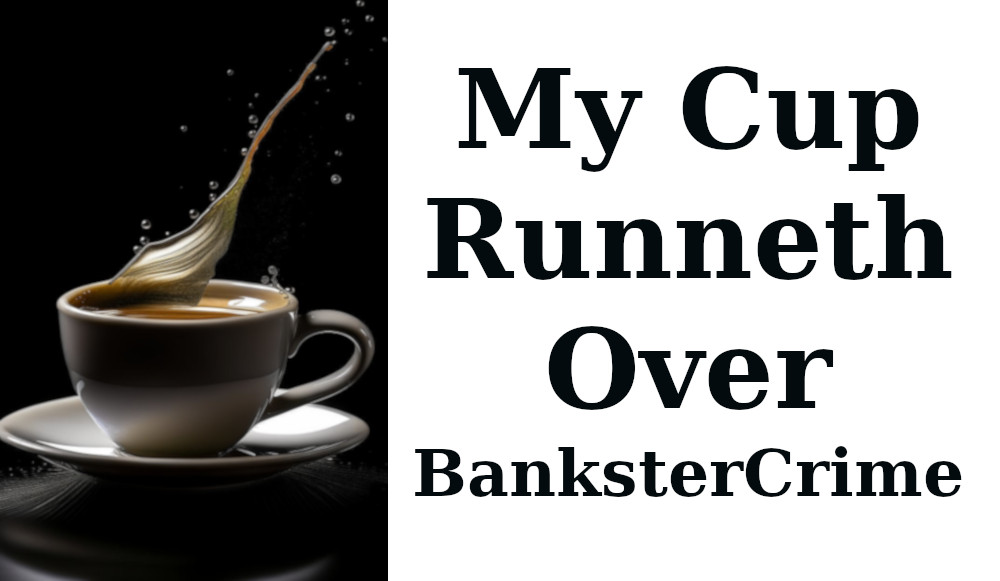
![]()
